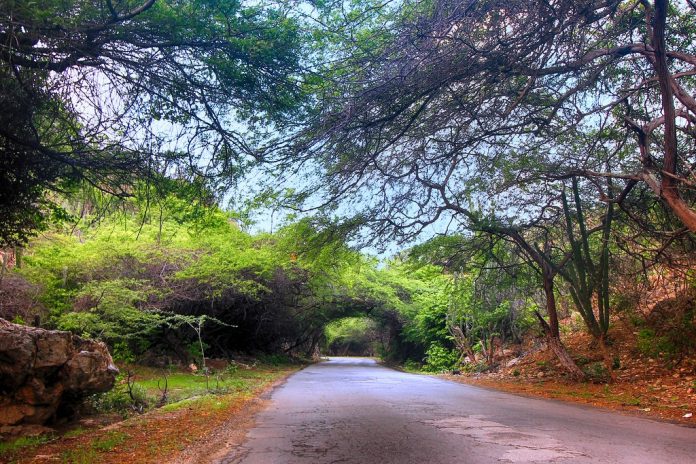Etnia Nativa, home to a unique cabinet of curiosities in Aruba, focuses on various aspects of native knowledge, transcendental wisdom, and the importance of upholding its uniqueness related to the endemic cultural source of identity. It encourages and educates visitors to embrace a genuine idea of bridging a link with the passionate island.
This episode shares explanations that provide historical context and significance behind the names of various places on the island.
Aruba has interesting names for its places, often derived from native expressions or historical situations and events. For example, Santa Cruz got its name from the tradition that during the time of Spanish colonization, the first cross representing Christianity was erected there. Another place that has changed names many times is Paardenbai (Horses Bay), our port or harbour,received its name since horse traffic occurred at a beach in the area nearby, with horses embarking or disembarking there. Additionally, Commandeurs Baaiis named after the place where the Dutch commander or director of the island lived during the 17th and 18th centuries.
During the end of the Spanish period and the beginning of the 17th century, Aruba experienced invasions by many nations, including French corsairs, due to the expansion of piracy in the Caribbean. In an attempt to thwart the invasion, a local chief, also known as a Cacique, named Gaspeti, confronted the invaders in a narrow pass, which came to be known as “Paso Frances” or Rooi Frances. Unfortunately, Gaspeti and his followers were ambushed nearby an elevated grotto called “Canashito.” Tragically, their hiding place was revealed when a barking dog gave away their position to the French invaders. Unable to enter the grotto, the invaders lit a fire at its entrance, resulting in the suffocation of many brave individuals.
Other sites in Aruba have names derived from Papiamento, such as “Marawiel,” which originated from the time in which they used a steam powered tractor in the goldmining industry. According to an oral tradition passed down through generations, the story goes that one rainy day, the tractor got stuck in the mud, and ropes had to be tied to the wheels to get it moving again. This incident became the talk of the day sincenative ingenuous had to be implemented marking a place going uphill as Marawiel, which literally means “to bind the wheel” in Papiamento. In Spanish, the name “Marawiel” translates to “atar la rueda,” or “to tie the wheel.”
With the curious name of Vader Piet, we encounter another site on the north coast, which translates into English as ‘Father Peter.’ In 1829, a gentleman named Pieter Lampe resided in the vicinity of that place that held a position of authority in the remote district. Tragically, Pieter Lampe was assassinated. However, was known for his compassionate and helpful nature, so people affectionately referred to him as ‘Vader Piet’ (‘Father Piet’ in English), a name that eventually became associated with the region. The fact that the name is in the Dutch language (as ‘vader’ means ‘father’) suggests that the Lampe family may have spoken Dutch at home, the language of the Protestants.
Although Sabaneta is the oldest historical settlement and the first capital of the island, its name originated around 1840 when the cultivation of cochineal revitalized the area (as mentioned in episode 92 of Island-Insight). The name “Sabaneta” means ‘the small savannah,’ possibly to differentiate it from Sabana Grande, which is located further down west.
San Nicolas owes its name to the exploitation of phosphate as a fertilizer in 1879. The name was obtained from a landowner in that area, Nicolas van der Biest. Prior to this, subordinates addressed landowners with their given names, preceded by ‘shon,’ which means ‘sir.’ It is said that Shon Nicolas, referring to Nicolas van der Biest, originated the current name of San Nicolas.
Nowour island also has many Toponym -place names- that derive from Native American origins, and specifically Native Aruban. Follow us to the next episode and share your experience.
Recommended: If you have a keen interest in experiencing Aruba’s heritage, a visit to Etnia Nativa is a must. What sets Etnia Nativa apart are the owner’s firsthand experience and insights. Their personal touch adds depth and authenticity to the experience, allowing visitors to forge a meaningful connection with the island’s history. By engaging, you can gain valuable insights and develop a profound understanding of Aruba’s cultural traditions.
To arrange a visit, contact etnianativa03@gmail.com or WhatsApp (messages only) at +297 592 2702. Appointments are necessary to ensure a personalized and immersive experience.

















